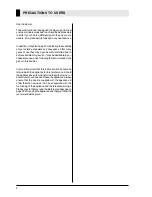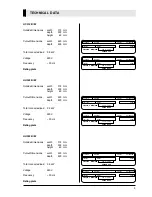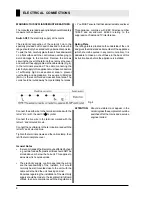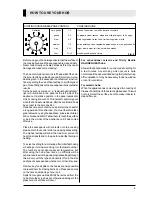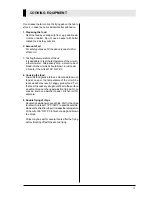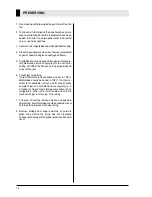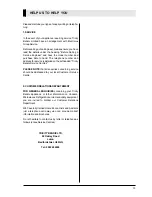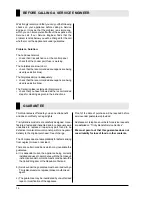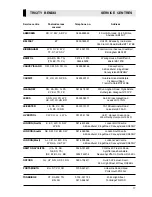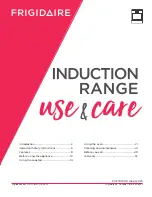
10
COOKING EQUIPMENT
SAUCEPANS
Conventional Ceramic Hobs
Pans should have flat bases and be approximately the
same size as the cooking area.
The hob is fitted with a thermal limiter, which is a safety
device to prevent the ceramic glass overheating, larger
pans can be used - up to 225mm (9") base diameter on
a nominal 180mm (7") heated area - providing they do not
overlap the hob trims.
The base of the pans should be smooth. You must
ensure that any new pans are well scrubbed to remove
any rough edges or take off any deposits left from
manufacture.
Halogen Heated Hobs
The recommendations are as for the conventional ceramic
hob, although it is preferable to use pans with non-
reflective bases. Smooth exterior enamel based pans,
which absorb heat, can also be used.
Specialist Pans
Pressure cookers, preserving pans, etc. should comply
with the recommendations for normal saucepans given
above. Traditional round bottomed woks are not suitable
for use even with a stand, but woks with flat bases may
be used.
General Notes
Very thin, badly dented and distorted pans, particularly
with uneven bases should
NOT
be used.
Never place a utensil with a skirt (e.g.a bucket) on the
heated area.
Pans should not have rough bases and should be lifted
on and off the heated area not slid on, since this may
in time scratch the surface finnish of the hob.
* Do not use large preserving pans or fish kettle across
2 hotplates as damage may occur to the hob.
* Pans must NOT overlap the hob trims.
How To Use Your Hob
1. Before using your hob, always ensure the surface of
the cooking areas and the saucepans are clean and
dry. Never cook directly on heated areas as it may
cause damage and make more cleaning!
2. Place the saucepans with contents onto the coo-king
area and turn the control knob to an appro-priate
setting. The highest setting will allow the maximum
amount of heat to be transferred to the pan for initial
fast boiling or heating, but is important to be guided
by any particular recommendations given in the
saucepan manufacturer's instructions regarding the
use of heat setting to suit the type of pan. Close fitting
lids on the saucepans will ensure faster results.
3. To select a setting for simmering after initial fast
boiling or heating, or for slower cooking, turn to a
lower number. The numbers do not denote any set
temperature, but after using the hob a few times, no
difficulty will be experienced in selecting an appropriate
setting, although this will vary with the type and
quantity of food, the size and type of saucepan and
whether or not the lid is used.
4. Remove any food spills on the hob as soon as pos-
sible to prevent them from being burned on. Please
see notes on the care and cleaning of your hob. On
ceramic hobs, sugar solutions e.g. jam and syrups
must be wiped off the hob surface immediately to
avoid the surface being damaged.
5. It is inadvisable to leave an empty pan on a heated
area.
6. Saucepans may be rested on unheated areas when
cooking is complete, prior to serving the food.
Deep Fat Frying
For safety purposes when deep fat frying, fill the pan only
one-third full of fat or oil.
Do not cover the pan with a lid and do not leave the pan
unattended. In the unfortunate event of a fire, switch off
at the mains supply and cover the pan with a lid or damp
cloth to assist in smothering the flames.
wrong
wrong
good


